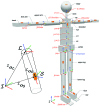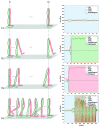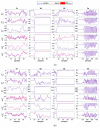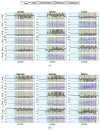Simultaneous Floating-Base Estimation of Human Kinematics and Joint Torques
- PMID: 31234414
- PMCID: PMC6631387
- DOI: 10.3390/s19122794
Simultaneous Floating-Base Estimation of Human Kinematics and Joint Torques
Abstract
The paper presents a stochastic methodology for the simultaneous floating-base estimation of the human whole-body kinematics and dynamics (i.e., joint torques, internal and external forces). The paper builds upon our former work where a fixed-base formulation had been developed for the human estimation problem. The presented approach is validated by presenting experimental results of a health subject equipped with a wearable motion tracking system and a pair of shoes sensorized with force/torque sensors while performing different motion tasks, e.g., walking on a treadmill. The results show that joint torque estimates obtained by using floating-base and fixed-base approaches match satisfactorily, thus validating the present approach.
Keywords: floating-base dynamics estimation; human joint torque analysis; human wearable dynamics.
Conflict of interest statement
The content of this publication is the sole responsibility of the authors. The European Commission or its services cannot be held responsible for any use that may be made of the information it contains.
Figures













References
-
- Tirupachuri Y., Nava G., Latella C., Ferigo D., Rapetti L., Tagliapietra L., Nori F., Pucci D. Towards Partner-Aware Humanoid Robot Control Under Physical Interactions. arXiv. 20191809.06165
-
- Maeda Y., Hara T., Arai T. Human-robot cooperative manipulation with motion estimation; Proceedings of the IEEE/RSJ International Conference on Intelligent Robots and Systems. Expanding the Societal Role of Robotics in the the Next Millennium (Cat. No.01CH37180); Maui, HI, USA. 29 October–3 November 2001; pp. 2240–2245. - DOI
-
- Amor H.B., Neumann G., Kamthe S., Kroemer O., Peters J. Interaction primitives for human-robot cooperation tasks; Proceedings of the IEEE International Conference on Robotics and Automation (ICRA); Hong Kong, China. 31 May–7 June 2014; pp. 2831–2837. - DOI
MeSH terms
Grants and funding
LinkOut - more resources
Full Text Sources

